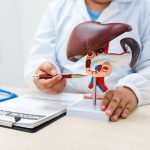SHOCKING: Liver cancer cases set to double by 2050, scientists warn
 (NaturalHealth365) Here’s a sobering reality check: liver cancer cases are projected to nearly double from 870,000 in 2022 to 1.52 million by 2050. However, what should grab your attention is a major analysis published in The Lancet, which reveals that 60% of these cancers could be prevented.
(NaturalHealth365) Here’s a sobering reality check: liver cancer cases are projected to nearly double from 870,000 in 2022 to 1.52 million by 2050. However, what should grab your attention is a major analysis published in The Lancet, which reveals that 60% of these cancers could be prevented.
The Lancet Commission on liver cancer just delivered some of the most comprehensive data we’ve ever seen on this deadly disease. Liver cancer is already the sixth most common cancer globally and the third leading cause of cancer deaths. With five-year survival rates ranging from just 5% to 30%, prevention isn’t just preferable – it’s essential.
The preventable tragedy everyone ignores
“As three in five cases of liver cancer are linked to preventable risk factors, mostly viral hepatitis, alcohol and obesity, there is a huge opportunity for countries to target these risk factors, prevent cases of liver cancer and save lives,” explains Prof Stephen Chan from the Chinese University of Hong Kong, the study’s lead author.
The commission identified the main culprits: hepatitis B virus (39% of cases), hepatitis C virus (29%), alcohol consumption (19%), and metabolic dysfunction-associated steatotic liver disease or MASLD (8% currently, but rising fast).
What’s particularly alarming is the shifting landscape. While viral hepatitis cases may decline slightly, alcohol-related liver cancer is projected to jump from 19% to 21% of cases by 2050. Even more concerning, MASLD-related cases are expected to surge from 8% to 11%.
Why your belly fat could be your biggest threat
MASLD, previously called nonalcoholic fatty liver disease, is now the fastest-growing cause of liver cancer globally. About one-third of the world’s population already has this condition, driven primarily by obesity and metabolic syndrome.
“Liver cancer was once thought to occur mainly in patients with viral hepatitis or alcohol-related liver disease. However, today, rising rates of obesity are an increasing risk factor for liver cancer, primarily due to the increase in cases of excess fat around the liver,” warns Prof Hashem El-Serag from Baylor College of Medicine.
The numbers are staggering. In the US, MASLD prevalence continues to climb alongside obesity rates. By 2040, over 55% of American adults could have MASLD, setting the stage for a liver cancer epidemic.
Natural strategies for liver protection
While government policies matter, individual action can be incredibly powerful. The commission highlighted several approaches that anyone can implement:
Address metabolic health directly: Since MASLD is driven by insulin resistance and metabolic dysfunction, focusing on blood sugar control through diet and exercise can significantly reduce risk.
Support natural detoxification: Your liver processes toxins daily. Supporting this function through adequate hydration, antioxidant-rich foods, and reducing exposure to toxins helps maintain liver health.
Optimize nutrition: Certain nutrients specifically support liver function. Milk thistle, alpha-lipoic acid, and N-acetylcysteine have shown promise in protecting liver cells from damage.
Reduce inflammatory foods: Processed foods, excess sugar, and refined oils create inflammation that can progress to liver damage. Emphasizing organic, whole foods helps reduce this inflammatory burden.
Consider targeted screening: The commission suggests screening for liver damage should become routine for people at high risk – those with obesity, diabetes, and cardiovascular disease.
The window is closing
Prof Jian Zhou from Fudan University, who chaired the commission, put it bluntly: “We risk seeing close to a doubling of cases and deaths from liver cancer over the next quarter of a century without urgent action to reverse this trend.”
The sobering math shows that liver cancer deaths could rise from 760,000 in 2022 to 1.37 million in 2050 if current trends continue.
What makes this particularly tragic is how preventable much of it is. Unlike some cancers with unclear causes, liver cancer’s main risk factors are well-established and largely modifiable.
The time to act is now
Prof Valérie Paradis from Beaujon Hospital summed up the urgency: “Compared with other cancers, liver cancer is very hard to treat but has more distinct risk factors, which help define specific prevention strategies.”
The commission’s research indicates that with sustained effort, many future cases of liver cancer can be prevented. But the window for action is narrowing. The lifestyle choices you make today, the policies governments implement tomorrow, and the healthcare priorities we set collectively will determine whether we see this predicted doubling of cases or successfully prevent millions of deaths.
The blueprint for prevention exists. The question is whether we’ll use it before it’s too late.
If you want to discover comprehensive, natural strategies for preventing cancer and supporting your body’s defense systems, get lifetime access to the Stop Cancer Docu-Class, featuring 22 experts sharing powerful insights on natural cancer prevention, immune system support, and evidence-based healing protocols. Plus, get over $1,600 in bonuses, including anti-cancer food guides and detoxification plans. Own the complete docu-class now and defend against the threat of cancer starting today.
Sources for this article include:



